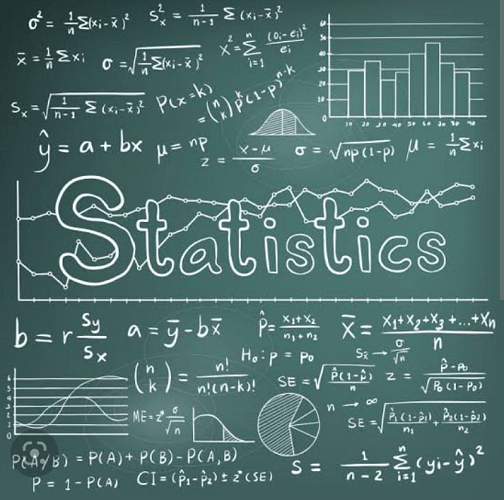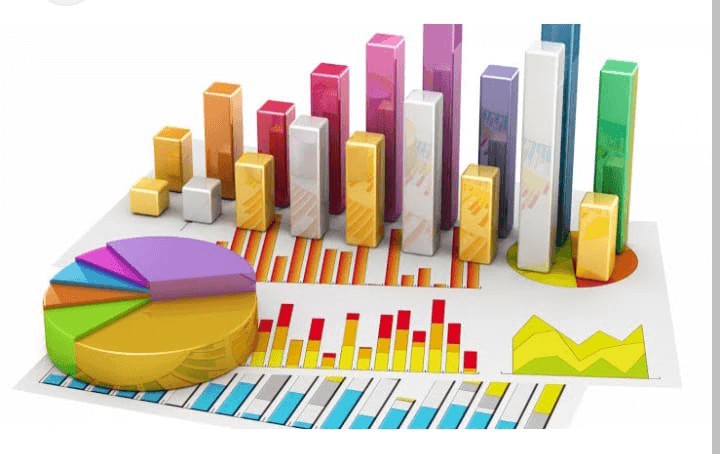Statistics DefinitionIn brief, it can be said that Statistics is an important process, and it becomes a critical factor when a decision is based on data. It is a branch of mathematics that deals with data. Correct statistical information helps select a precise method to gather data and engage those samples in an accurate examination to generate an accurate result. 
Statistics in MathematicsStatistics mainly involves data presentation, data gathering, comprehension, and analysis. The main objective of using statistics is to strategize the gathered data regarding statistical surveys and experimental designs. Statistics are also sometimes said to be a mathematical science that involves numerical data. Example of Statistics
Types of StatisticsStatistics has only two branches:
1. Descriptive Statistics Descriptive statistics involves tables or graphs, numerical calculations, and presentations that employ data to describe the number of students in the Class. 2. Inferential Statistics It is dependent on the data sample that is collected from the population. This type of statistic makes inferences and predictions. Both types are recruited in statistical analysis. Features of the StatisticsThe critical features of the statistics are:
Significance of the StatisticsThe significance of the statistics has been elaborated below:
Comprehension of Statistical DataVariables drive the roots of the statistics. A variable is a data set that can be counted and marks attributes or characteristics of an item. For example, a bike can have color, model, mileage, and year variables. The blend of the variables and data statistics helps recognize trends and outcomes. Variables have been divided into two types: Quantitative and Qualitative variables.
Quantitative variables are understood numerically and have weightage when about a non-numerical descriptor. The variables represent amounts such as age, height, or weight. The quantitative variable has been divided into two categories. The first is discrete variables, and the second is continuous quantitative variables.
Qualitative variables: It has specific attributes and is often non-numeric. Qualitative variables in the statistics include the city of birth, gender, or eye color. Statistical Level of MeasurementWe know that outcomes and variables are part of statistics, so the resulting level of measurement and quantified outcomes in different ways: 1. Nominal Level of Measurement The simple way to understand the nominal level of measurement is to take it as non-numerical facts. This level of measurement only involves categories or labels given to other variables. It does not involve quantitative value, and numerical value and qualities are not considered. For example, The name of the Prime Minister elected in 2019 was Robert jr. 2. Ordinal Level Measurement All data contain the same weight or value and are arranged in order. These statistics cannot be subtracted from each other because the place of the data point is important. It is embodied as a nonparametric statistic and compared against the total variable group. For example, Indian Ashwin Kumar was the fastest man in the Rio Olympics in the 50-meter sprint. 3. Interval Level Measurement Differences between the data set contain meaning, and the outcomes are arranged in order. Comparison is often based on two different data points. For example: The price Rise hit 9.6% in April 2002, and the last time the price rise was high was in January 1980. 4. Ratio Level Measurement Differences between the data values have meaning, and outcomes are arranged in order. Now it can contain zero value and the starting point. Data ratio also contains some meaning. For example, the highest temperature recorded by the meteorological department was 51 degree Celsius in Nashik. Scope of StatisticsStatistics are employed in numerous sectors, including probability, weather, forecasting, and geology. The objective of the statistics is to achieve understanding from the available data. It stresses the applications; therefore, it is also called a mathematical science. Techniques in Mathematics
Three techniques play an important role, and they are
Presentation of DataDifferent methods are adopted to present the data to the audience, and some of the methods are:
1. Frequency Distribution: The symbol' f' is used to represent the frequency of the Data. A frequency table is drawn by organizing gathered data values in the ascending order of size concerning their frequencies. 2. Line graph: A series of data points related to a straight line is represented by a line chart. These series of data are referred to as "markers." 3. Histogram: The histogram is a graphical exhibition of data grouped into continuous number ranges, and each range corresponds to a vertical bar. 4. Bar Graph: It displays grouped data with rectangular bars with lengths proportional to the values they represent. These bars can be constructed horizontally or vertically. 5. Pie Chart: It is another type of graph in which a circle is partitioned into sectors. Every sector displays a proportion of a whole. 6. Pictograph: It displays data by employing many pictures. The pictures could be a cherry, a banana, or an oak tree. It is just a display of data. Central Tendency MeasurementStatistics in mathematics are employed to present the central tendencies of the ungrouped and grouped data. The three measures of the Central tendencies are:
Central tendency is employed to figure out the available data's central value. Measures of DispersionTo interpret how heterogenous or homogenous the data is. The dispersion measures in the statistics help in understanding the data variability. Basically, there are two types of dispersion measures, categorized as Relative and Absolute, which have been explained below. Absolute Measures of Dispersion
Relative Measures of Dispersion
Skewness in StatisticsSkewness, meaning in Statistics, is a computation of the asymmetry in the probability distribution. It computes the deviation of the curve of the normal distribution of the given data. The outcome of the skewed could be negative or positive. ANOVA StatisticsThe full form of ANOVA is an Analysis of Variance. It is a gathering of statistical models employed to compute the mean difference for the provided set of data. Degree of FreedomThe degree of freedom is employed in the statistics for those values independent of change. Application of the StatisticsThe application of Statistics is enormous and is employed in various sectors. It also has an important role in human life besides its use in mathematics. Some of the statistics applications include:
Frequently Asked QuestionQuestion: What is the objective of the Statistics? Ans: It helps to learn to use limited samples to make accurate determinations. Using graphs, diagrams, or tables plays a significant role in presenting the information meaningfully. Question: What is the significance of Statistics in actual life? Ans: It motivates you to use useful ideas to collect information and use it in the right direction to present outcomes. Measurement is an important cycle behind how we disclose in science and settle on choices dependent on information and forecasts. Question: Define Summary Statistics. Ans: It is a type of descriptive statistics employed to summarise the data set in a simple and meaningful way. It is used to compute statistical dispersion, the shape of the distribution, and statistical dependence.
Next TopicAudit Definition
|
 For Videos Join Our Youtube Channel: Join Now
For Videos Join Our Youtube Channel: Join Now
Feedback
- Send your Feedback to [email protected]
Help Others, Please Share









